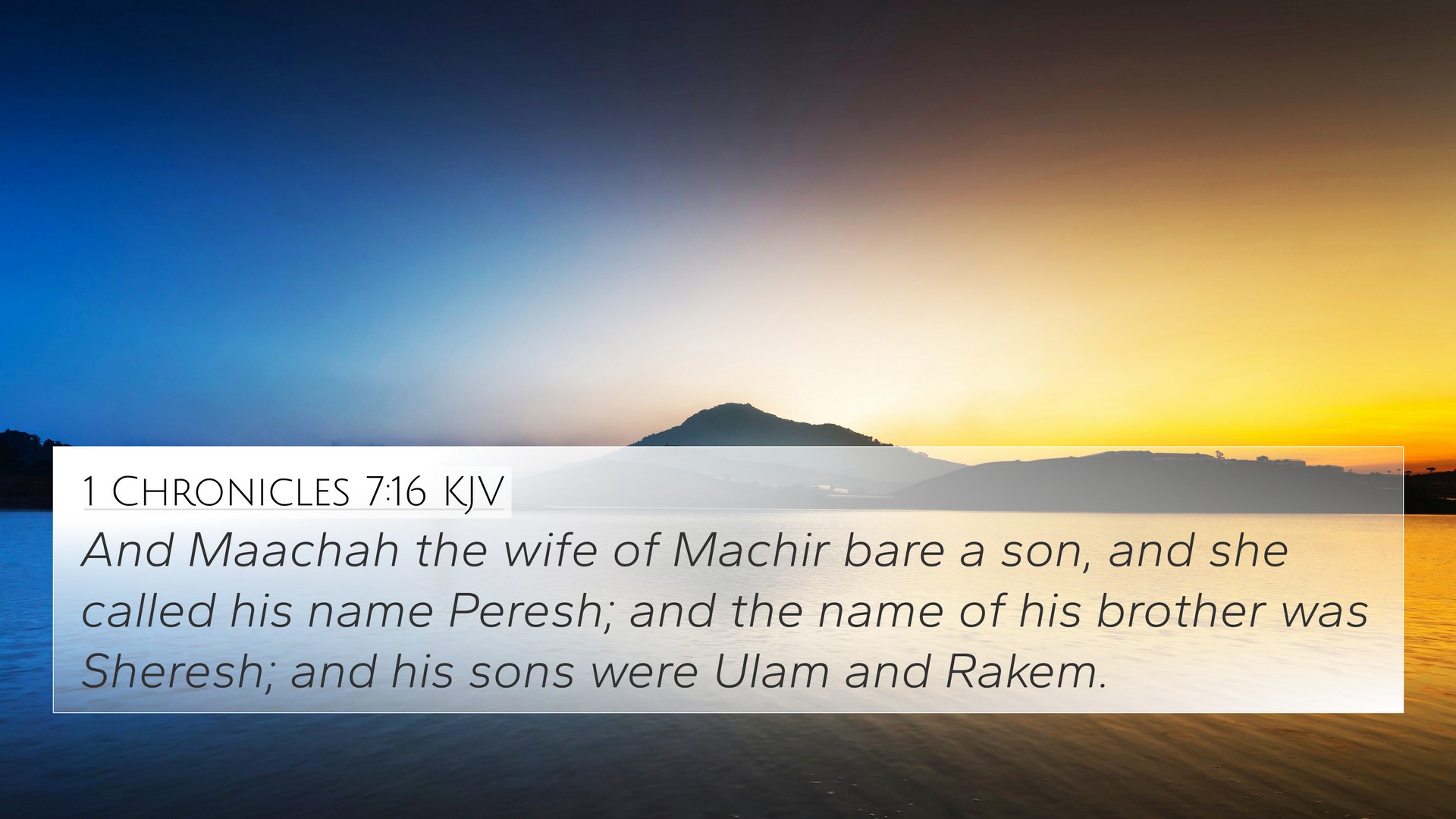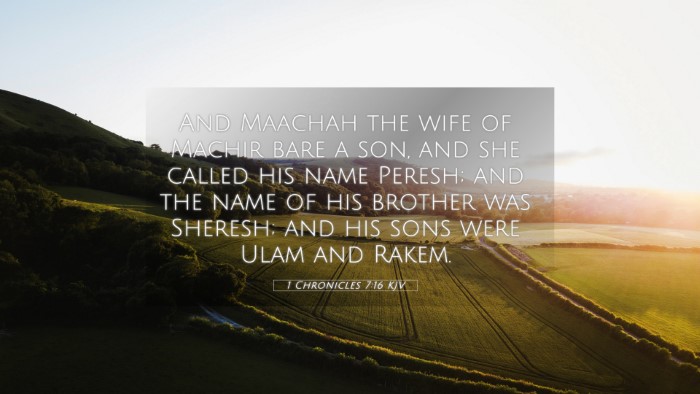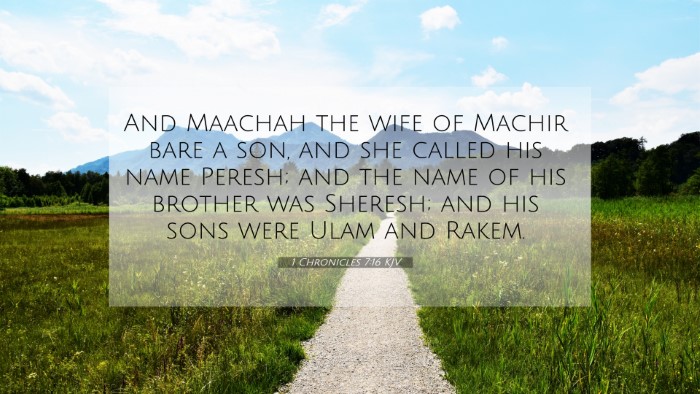Understanding 1 Chronicles 7:16
1 Chronicles 7:16 states:
“And Maachah the wife of Machir bare a son, and she called his name Peresh; and the name of his brother was Sheresh, and his sons were Ulam and Rakem.”
This verse encapsulates genealogical significance, mentioning descendants and indicating lineage, which is a recurring theme in the Scriptures. Below is an analysis of its meaning, drawing from public domain commentaries.
Background and Context
The genealogies in the book of Chronicles serve several purposes:
- To establish the lineage of key figures in Israel's history.
- To emphasize the importance of heritage and the covenant of God with the Israelites.
- To offer a comprehensive understanding of the tribes of Israel.
Commentary Insights
Matthew Henry Commentary
Matthew Henry draws attention to the familial implications of this verse. He highlights:
- The significance of naming in ancient cultures, as it often encapsulated hope and identity.
- Maachah's role as the mother exhibits the influence of women in biblical narratives, particularly in genealogies.
Albert Barnes Commentary
Albert Barnes focuses on the historical importance of the tribes, elucidating:
- Peresh and Sheresh as significant figures whose lineage carries forth the story of Israel.
- Connections with other tribes to emphasize the importance of family structure in the community of Israel.
Adam Clarke Commentary
Adam Clarke elaborates on the meanings behind the names:
- Peresh: Signifying 'a breach' or 'a division', perhaps pointing to historical events during the Israelites' history.
- Sheresh: Chosen name reflects strength, illustrating the character qualities desired in the lineage.
Connections to Other Bible Verses
This verse can be cross-referenced with the following scripture passages:
- Genesis 48:16 – The blessing of Ephraim and Manasseh, showing the significance of lineage.
- Numbers 26:28-34 – A genealogy that links to the tribes and their inheritance.
- 1 Chronicles 2:21-23 – Further elaboration on Judah's lineage and its associated families.
- 2 Samuel 9:5-6 – The story of Mephibosheth, showcasing the importance of family in Israel.
- Ruth 4:17 – The ancestry that connects to King David, underscoring the significance of legacy.
- Matthew 1:3-6 – The genealogy of Jesus, which traces back to the Old Testament figures.
- Hebrews 7:14 – Indicating the lineage of Christ and His connection to the tribe of Judah.
Thematic Connections
The themes surrounding this verse encompass:
- The importance of family lineage in biblical narratives.
- The role of women in shaping history.
- The broader narrative of God’s covenant through generations.
Cross-Referencing Tools and Methods
For those studying this verse, utilizing cross-referencing tools can enhance understanding:
- Using a Bible concordance to find related verses by keywords such as 'tribe', 'lineage', or 'descendant'.
- Employing a Bible reference resources guide to explore related themes and verses.
- Considering cross-reference Bible study methods for an organized examination of biblical relationships.
Conclusion
1 Chronicles 7:16 offers more than a simple listing of names; it opens a window into the intricate tapestry of Israel's history and the roles individuals play within it. Understanding this verse in context with cross-referenced scriptures enriches our comprehension of God's ongoing narrative throughout the Bible.
Further Study Suggestions
For a deeper investigation, consider exploring:
- Identifying connections between Old and New Testament to see how genealogies influence Christian theology.
- Comparative study of Pauline epistles regarding the value of genealogy in understanding faith.
- Cross-referencing Psalms with New Testament teachings to find thematic links that reinforce the importance of lineage.
Reflection Questions
To apply the insights from this verse, reflect on:
- How does understanding lineage impact your view of biblical narratives?
- What role do you see for women in the biblical genealogies?
- In what ways can you use cross-referencing to deepen your personal Bible study?


